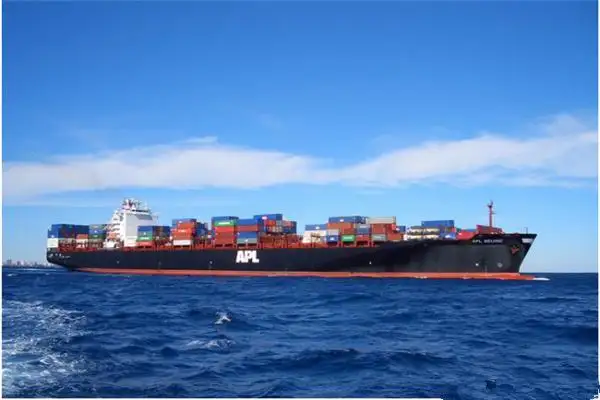At present, the scale and homogenization of China’s chemical industry is more serious, and the risk of excess is gradually rising. Many leading enterprises and traders, are actively exploring overseas markets.
At this stage, most of China’s chemical exports are concentrated in China’s neighboring and friendly countries, mainly in Southeast Asia and countries along the “Belt and Road”. With the rapid development of the countries along the Belt and Road, the scale of China’s chemical exports is also growing gradually.

According to customs data, China’s exports of chemicals to countries along the Belt and Road have shown the following characteristics.
I. Southeast Asian countries are important exporters of Chinese polyolefin products
According to the types of products exported from China to countries along the “Belt and Road”, China’s exports of chemicals, mainly basic chemicals and daily-use chemicals, such as Vietnam, Thailand, Malaysia, etc., are the main countries for China’s exports of polyolefin products. 2021 polypropylene exports to Southeast Asia accounted for more than 48% of China’s polypropylene exports. more than 48% of exports.
In addition, as China’s customs statistics show that polyolefin exports pass through Hong Kong, China and Taiwan Province of China, the majority of polyolefin exports from these two regions are still destined for Southeast Asian markets according to the final consumption areas of polyolefin products. Southeast Asia carries the majority (more than half) of China’s polyolefin export market. Among them, annual exports of polypropylene to Vietnam account for 34% and more of China’s total exports, with Vietnam being the largest export consumer country.
With the low labor cost, Southeast Asia has launched many plastic products processing enterprises, including more than 3,000 plastic products processing enterprises in Vietnam and more than 2,000 plastic products processing enterprises in Thailand. A large part of the plastic products produced in Southeast Asia will be exported to Japan, South Korea, Europe and America. This has a certain impact on the structure of China’s plastic products industry, but the impact on the polyolefin raw material field is not big yet.
Second, China’s exports to West and Central Asian countries are mainly chemical fiber supplies and daily-use chemicals
According to the statistics on China’s exports to West Asia and important and significant countries, the types of chemicals exported are mainly chemical fiber supplies and basic chemicals. For example, the scale of China’s exports of spandex to Turkey reached about 17,000 tons in 2021. The scale of China’s exports of polyester staple fiber to Pakistan, India, Bangladesh, Kazakhstan and other countries has shown a continuous growth trend in the past three years.
In addition, China also to Uzbekistan, Tajikistan, Kyrgyzstan and other countries, there is a certain amount of polyester staple fiber and spandex exports. To Turkey, India, Russia, paraformaldehyde, PTMBE, BDO, butanol, ethanol, there is a certain scale of exports, and the overall trend of growth.
Many countries in West Asia and Central Asia have weak economy and low level of domestic industry, and their own supply of basic chemicals is not enough, so they need more import to supplement. China, as their important neighboring country, has a fast developing chemical industry, which can form a good supply for their chemical demand.
III. “One Belt, One Road” is profoundly affecting the export logic of China’s chemical industry
The economic interaction between domestic regions and petrochemical enterprises and the “Belt and Road” countries is becoming more and more frequent and closely linked.
From January to August 2022, the import and export of Nanchang, Jiangxi to countries along the “Belt and Road” grew 77.7% year-on-year, accounting for 29.7% of Nanchang’s total foreign trade value.
In early April 2022, COSCO FOSS, carrying 148.5 tons of polyethylene products from Sinochem Quanzhou Petrochemical, left Xiamen port for Thailand, marking the successful completion of the first export order of polyolefin products from Sinochem in 2022.
Since 2018, Baling Petrochemical has taken the lead in opening the export market of SIS and SEBS to India, and the export has shown a growing trend in recent years.
At the end of 2021, the first international railroad export train of liquid chemicals BDO of Markor Chemical Group was launched, which opened up the land route of liquid chemicals transportation in China-Europe tank containers and opened up the European market of liquid chemicals. With the deepening of cooperation between China and countries along the “Belt and Road”, the export market of Chinese chemical industry is undergoing a huge transformation. On the one hand, the types of chemicals to be exported in the future will be more and larger, and the individual needs of the corresponding countries will be better met. On the other hand, the choice of target market for China’s chemical exports will shift from value choice to consumption choice, from the logic of flow trend relying on export arbitrage to the logic of flow trend supported by the consumer market. The third is that countries along the “Belt and Road”, especially Southeast Asia and West Asia, will probably become China’s largest export consumer market in the future, relying on the “China-Europe Class” and “manufacturing transfer The “megatrend” will support the long-cycle export of China’s chemical industry.
*Disclaimer: The content contained in this article comes from the Internet, WeChat public numbers and other public channels, and we maintain a neutral attitude toward the views expressed in the article. This article is for reference and exchange only. The copyright of the reproduced manuscript belongs to the original author and the institution, and if there is any infringementPlease contact Jetson Chemical for deletion
